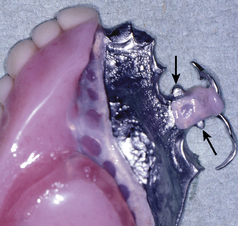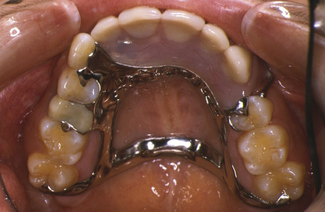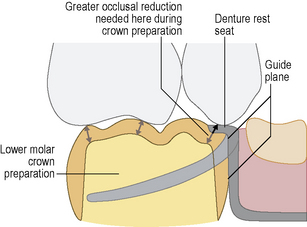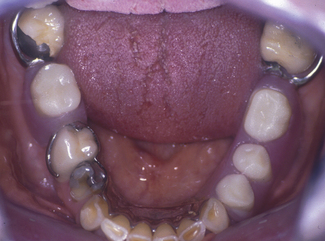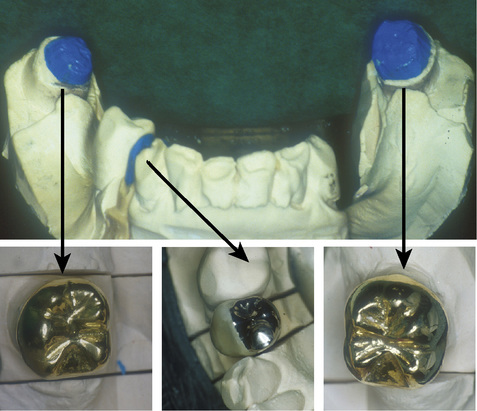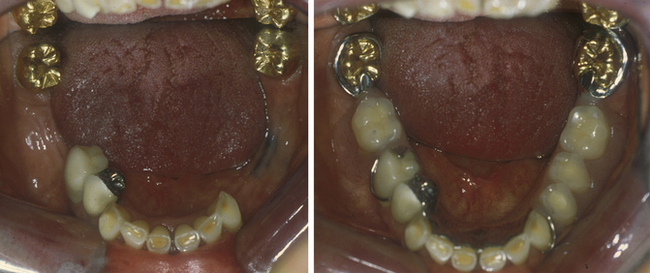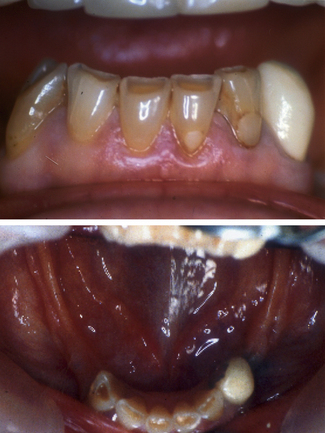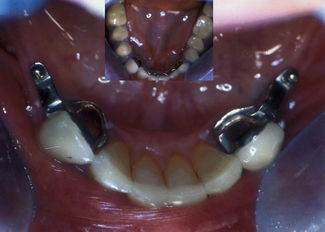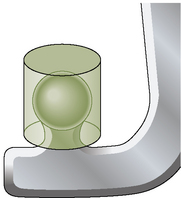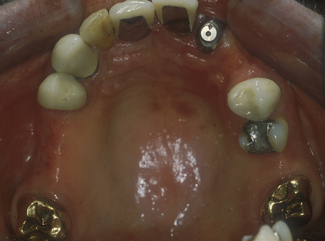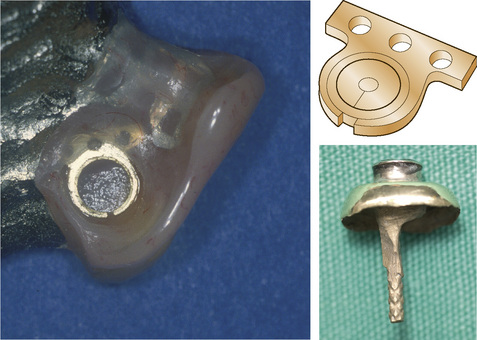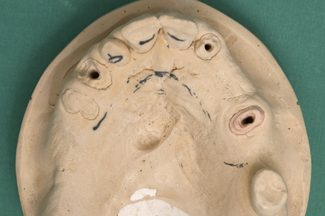Chapter 16 Complex multiple fixed and combined fixed and removable prosthodontics
Indications
Complex multiple fixed and combined fixed and removable prosthodontics can be indicated to restore teeth damaged and depleted by the ravages of caries, tooth wear and inherited and acquired defects (outlined in Chapters 1–5).
Combined fixed and removable prosthodontics
Rest seats, guide planes and undercuts
Rest seats provide direct dental support for a partial denture. They need to be large enough to provide support and deep enough for the rest on the partial denture to fit into the cavity or rest seat in the crown (or tooth) without interfering with the occlusion. The size of the rest seats needs to be sufficient to provide support and normally about one-third of the proximal width of the tooth is sufficient. The shape of the cavity should avoid sharp internal line angles and follow the general shape as shown in Figure 16.1. There should also be sufficient occlusal clearance to allow a minor connection between the base of the partial denture and any rest seats and clasps around the same tooth (Figure 16.2).
Knowing where the rest seat and connectors will ultimately be placed will therefore influence tooth preparation when a crown is planned. Occlusal reduction in the region of the rest seat and connector has to be greater than elsewhere on the occlusal surface as sufficient interocclusal space has to be provided for both the metal substructure to the crown and the thickness of the rest itself (Figure 16.3). Where crowns are concerned it is always important to place rest seats into metal as placement into ceramic will lead to shear fractures (Figure 16.4).
This section emphasizes the importance of planning the denture design before any tooth preparation takes place. Figures 16.5 and 16.6 illustrate this point clearly.
Precision attachments
There are situations where precision attachments are still indicated when fixed and removable prosthodontics are considered together. The routine use of implants has, to some extent, reduced the need for precision attachments on teeth because the cost of the attachment and laboratory work can approach that of implant retained prostheses. Precision attachments linked to fixed laboratory-made prostheses can be used to retain and stabilize removable prostheses. There are a number of designs that can be considered, ranging from extracoronal stud or seeker (ball and socket) attachments to intracoronal movable joints similar to those used in conjunction with fixed–movable bridge designs (see Chapter 19). To illustrate how such precision attachments can be used, consider the following three clinical scenarios.
Patient 1
The patient seen in Figure 16.7 has missing lower posterior teeth with severe resorption of the edentulous ridge, making it difficult to tolerate a lower removable prosthesis due to the lack of retention and stability. To address this, the lower canine teeth have been prepared for metal–ceramic crowns which have distal cantilevered bars and stud attachments incorporated into the metal substructure (Figure 16.8). The lower removable cobalt chromium prosthesis has a corresponding female attachment (socket) embedded into the acrylic of the denture base (Figure 16.9). This ‘ball and socket’ arrangement provides sufficient retention and stability without the need for clasping anterior teeth (Figure 16.8).
Patient 2
Precision attachments can be used in conjunction with other conventional means of retention for removable prostheses. Consider the patient seen in Figure 16.10; gold crowns have been placed on the molar teeth incorporating rest seats, guide planes and undercuts to achieve support, stability and conventional retention; however, retention is not so easily achieved anteriorly without the presence of unsightly metal clasps. One way to overcome this is to use a precision attachment on the upper left lateral incisor root. This tooth has been root treated and prepared for a cast post and diaphragm onto which is soldered the male component of a Rothermann type precision attachment; the female ‘clip’ attachment is embedded into the fit surface of the denture (Figure 16.11). The male component consists of a disc with a concavity around its periphery; the female clip seats into this concavity on insertion of the denture, giving good retention.
Patient 3
Figure 16.12 shows the die stone model of a patient who presented with multiple retained roots in the upper arch; the only teeth with natural crowns were the central incisors and the upper left second molar tooth. He was unable to wear a conventional denture due to a marked retch reflex. As for the previous patient the roots were root filled and prepared for cast post, diaphragm and Rothermann type attachments (Figure 16.13). The precision attachments provide excellent retention and allow a horseshoe cobalt chromium denture to be made with minimal palatal coverage.
Stay updated, free dental videos. Join our Telegram channel

VIDEdental - Online dental courses


